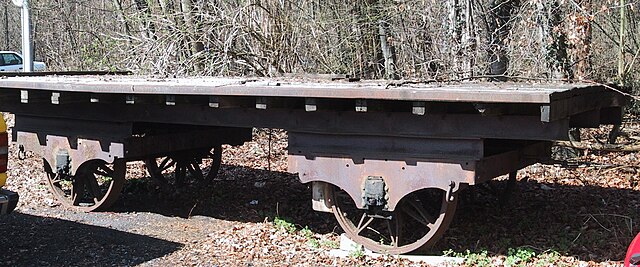The Swiss Northern Railway , informally known as the Spanisch-Brötli-Bahn, opened the first railway line within Switzerland in 1847, the Zürich–Baden line. This followed the extension of a French railway to Basel in 1844. The original line generally followed the south bank of the Limmat from Zürich to near its confluence with the Aar near Brugg, and then the south bank of the Aar to Olten. It was absorbed into the Swiss Northeastern Railway in 1853 and extended from Baden to Brugg in 1858. The line was absorbed into the Swiss Federal Railways on its establishment in 1902. It is electrified at 15 kV 16.7 Hz and its eastern 16 km section from Zürich to Killwangen-Spreitenbach is now part of the Zürich–Olten trunkline and has four tracks.
Nordbahn poster of 1847, partly in English
Spanisch-Brötli-Bahn locomotive in 1867
A Swiss industrial flat wagon
The railway was known as the Spanisch-Brötli-Bahn, after a Baden specialty
Zürich–Baden railway line
The Zürich–Baden railway line is a major railway line in Switzerland connecting the cities of Zürich and Baden. It forms part of the major east-west route between Zürich and Olten. The line generally follows the south bank of the Limmat from Zürich to Baden. A new line, the Heitersberg line, opened in 1975, branches off in Killwangen-Spreitenbach and follows a more southerly route through the Heitersberg Tunnel towards Olten. The Zürich–Baden railway is electrified at 15 kV 16.7 Hz and much of it has four tracks.
Limmattal marshalling yard





